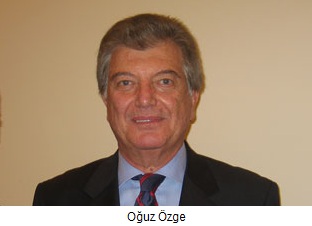

 (AINA) -- On August 7, Assyrian Martyrs Day, an Assyrian Genocide monument was unveiled in Fairfield, Australia (AINA 8-7-2010). The monument is dedicated to the 750,000 Assyrians (also known as Chaldeans and Syriacs) who were killed by Ottoman Turks in World War One, between 1915 and 1918, as well as the 3000 Assyrians killed by Iraqi soldiers in the town of Simmele, north Iraq in August, 1933. The Turkish genocide also claimed the lives of 1.5 million Armenians and 500,000 Greeks.
(AINA) -- On August 7, Assyrian Martyrs Day, an Assyrian Genocide monument was unveiled in Fairfield, Australia (AINA 8-7-2010). The monument is dedicated to the 750,000 Assyrians (also known as Chaldeans and Syriacs) who were killed by Ottoman Turks in World War One, between 1915 and 1918, as well as the 3000 Assyrians killed by Iraqi soldiers in the town of Simmele, north Iraq in August, 1933. The Turkish genocide also claimed the lives of 1.5 million Armenians and 500,000 Greeks.
The monument was fiercely opposed by Turkey (AINA 12-6-2009, 8-11-2010) and the Turkish community in Australia, whose mantra was the monument would "sew division" between the Assyrian and Turkish communities, despite the fact that there is no interaction between these communities and hence no division to sew.
On August 30 the genocide monument was vandalized (AINA 8-30-2010). Vandals painted a Turkish crescent and star on the monument's globe and wrote "fuck Assyrian dogs" and "fuck Assyria" on the left and forward sides of the base of the monument. The plaque at the front of the monument was removed.
Gaby Kiwarkis, an Assyrian from Australia, wrote an email to Oguz Özge, the Turkish ambassador to Australia, asking for his reaction to the vandalism. The ambassador responded as follows:
I was away from Canberra for a few days on a trip to Port Moresby, PNG. On my return I read your message. I cannot approve of what happened in Fairfield. I hope the perpetrators will be apprehended and brought to justice. I hasten to point out; diverse Assyrian Associations in the world should need to look at their policies against Turks critically and must review them to suit their own interests, not those of some foreign powers. A re-evaluation of your policies will also serve to demonstrate that the current Assyrian discourse of genocide is not self-satisfactory, nor does it aim at holding together the Assyrians scattered all around the world.
The ambassador's response begins agreeably enough, with the obligatory condemnation of the crime, but quickly degenerates into blame-the-victim mode. To understand the supreme irony of this response, a little background on the Turkish Genocide of Assyrians is necessary.
"We have made a clean sweep of the Armenians and Assyrians of Azerbaijan." Those were the words of Djevdet Bey, the governor of Van Province in Ottoman Turkey, who on April 24, 1915 lead 20,000 Turkish soldiers and 10,000 Kurdish irregulars in the opening act of the genocide of Assyrians, Armenians and Pontic Greeks.
Roman Catholic, Orthodox, Protestant, Presbyterian and Church of the East Assyrians were killed. Assyrians were killed in all parts of the Ottoman Empire -- Lebanon, Istanbul, Tur Abdin, the Hakkary mountains of south-east Turkey, North Iraq, Syria. Assyrians in all economic classes were killed, from the poorest to the wealthiest. Assyrians of all professions were killed, from farmers to priests and doctors. Finally, no Assyrian was spared, no man or woman or child regardless of age.
The Assyrian population in Ottoman Turkey was one million on April 23, 1915. By the end of 1918 it had been reduced to 250,000 by genocide. Seventy five percent of Assyrians were killed in three years. Three quarters of today's Assyrians have a family genocide story to tell.
Today Assyrians are scattered throughout the world, they are in a Diaspora that began in 1915 directly because of the genocide. They are in Europe, North America, Australia, New Zealand and Russia. They belong to many Christian denominations and speak two major dialects. They form one nation that is by no means monolithic. But there is one thing that transcends all differences and unites them absolutely: the Turkish Genocide.
In 1915 the Ottoman Turks had no difficulty in unifying the diverse Assyrian population into one monolithic group for the purpose of extermination. Yet now Mr. Özge has the audacity to say "…Assyrian discourse of genocide is not self-satisfactory, nor does it aim at holding together the Assyrians scattered all around the world." His ancestors having nearly physically destroyed the Assyrians by 1918, Mr. Özge, it seems, wants to destroy them ideologically in 2010. Turks could unify the Assyrians to exterminate them, but Assyrians cannot unify to discuss the Genocide.
The Genocide was directed at the Christian populations in the Ottoman Empire: Assyrians, Armenians and Greeks. These groups were targeted because they were Christian. Today these groups work together to raise awareness of the Genocide. Since these three groups are distinct, Mr. Özge would claim, by the logic of his statement above, that discourse of the genocide would not hold these groups together. But these groups hold together precisely for the purpose of discourse of the Genocide.
Mr. Özge states "Assyrian Associations in the world should need to look at their policies against Turks critically and must review them to suit their own interests, not those of some foreign powers." Since Assyrians have no state of their own, and are scattered throughout the world, as well as being a rather small population (3.5 million world-wide), it is has hard to see how Assyrians are serving foreign powers, as is implied by the statement above. More importantly, the Turkish Genocide of Assyrians is a fact of history, and the truth of that does not change even if Assyrians are serving foreign powers or are being manipulated by them. One sure way to stop foreign powers from using the Genocide against Turkey is for Turkey to acknowledge the genocide and move on.

or register to post a comment.